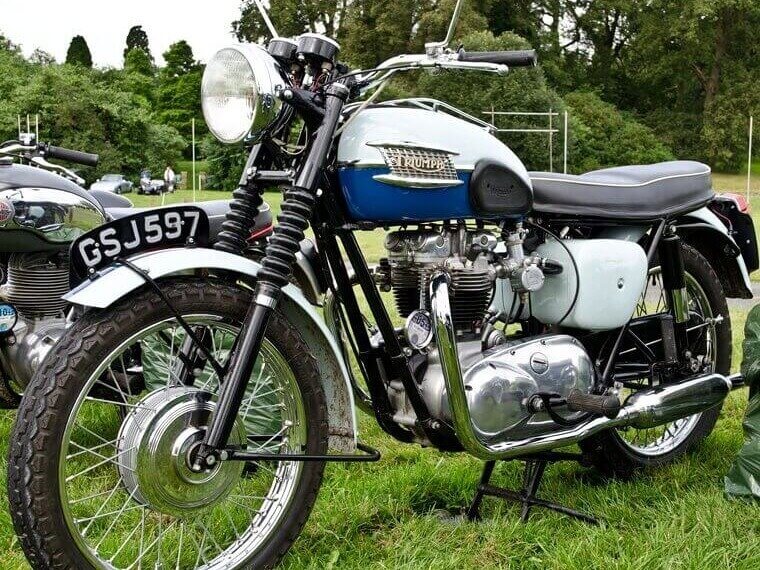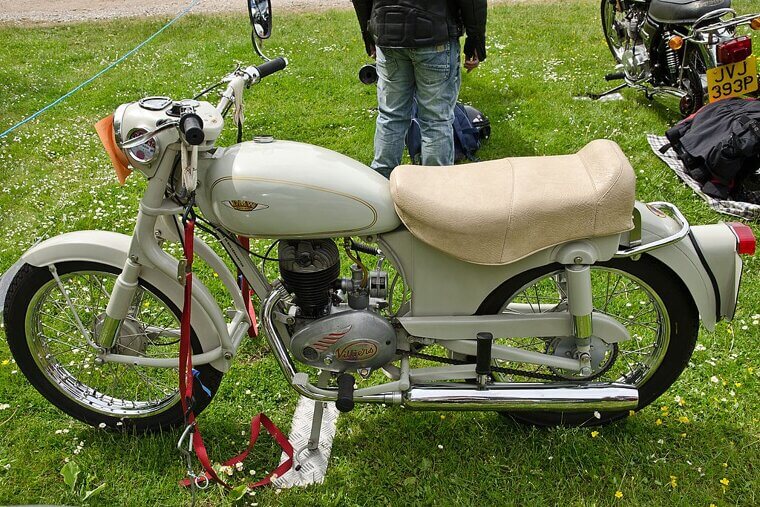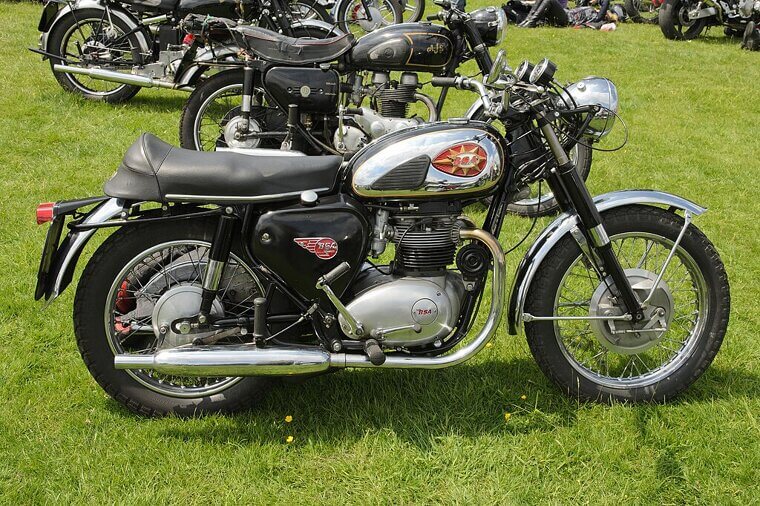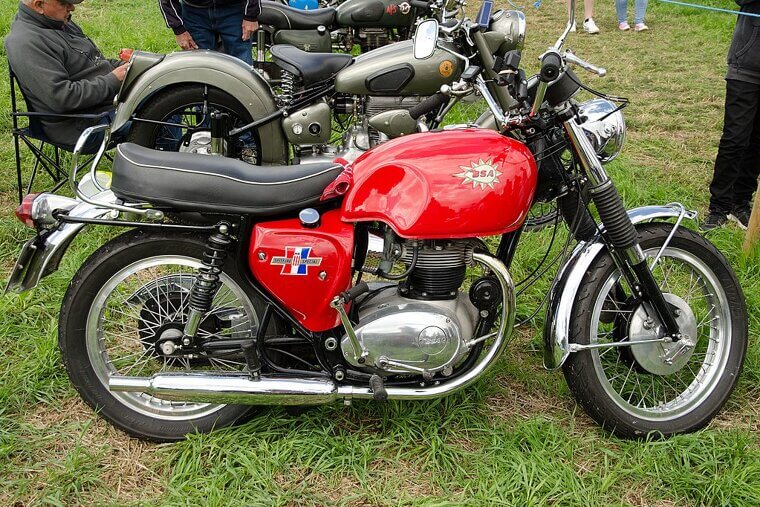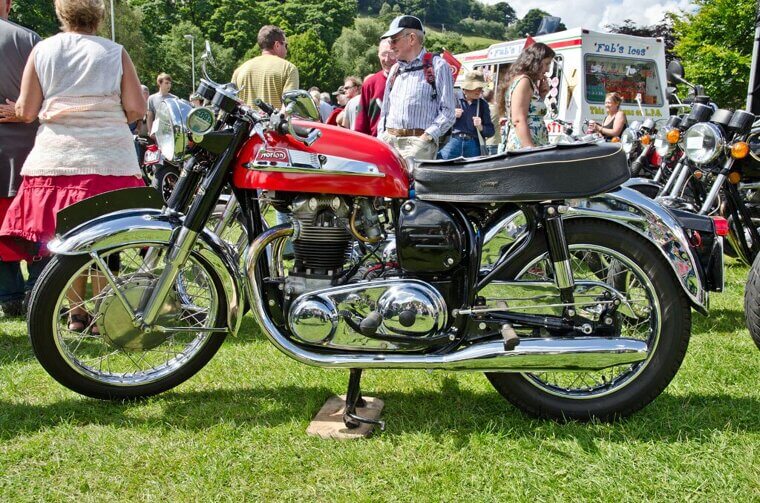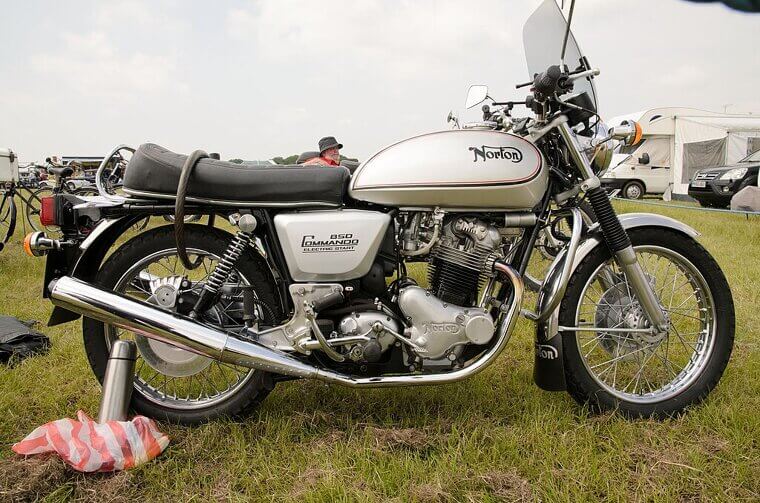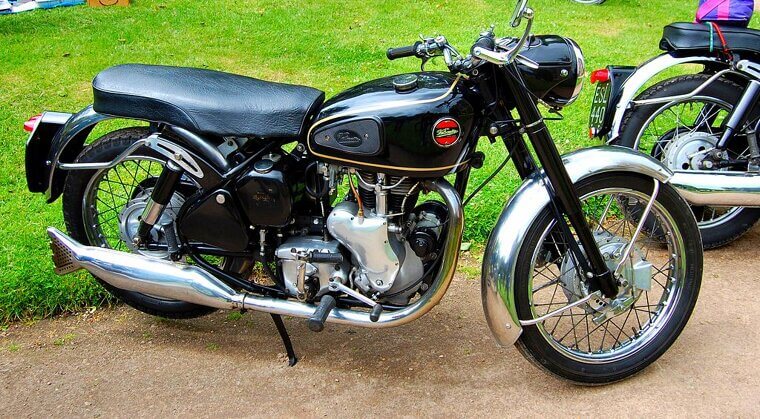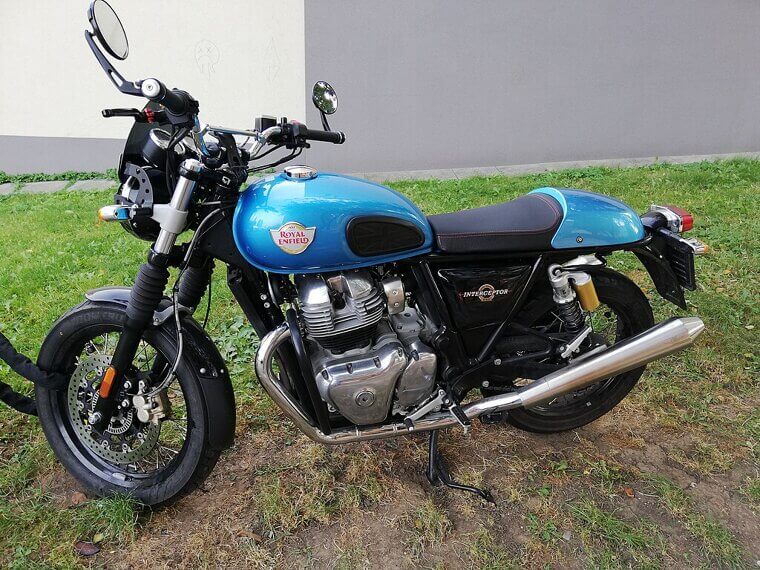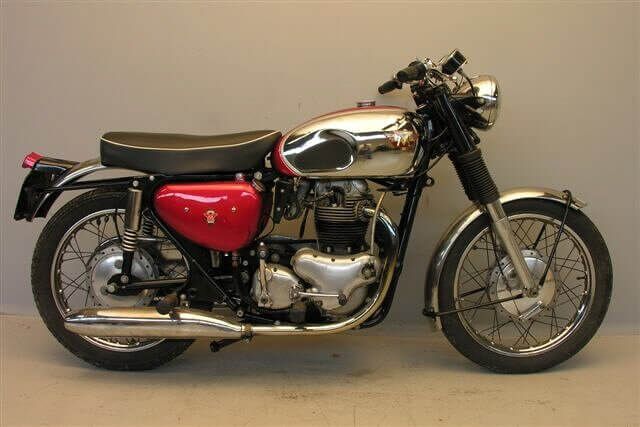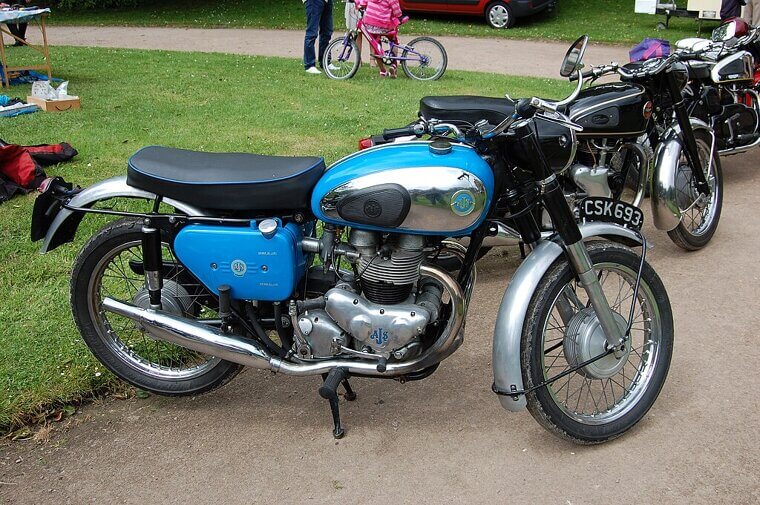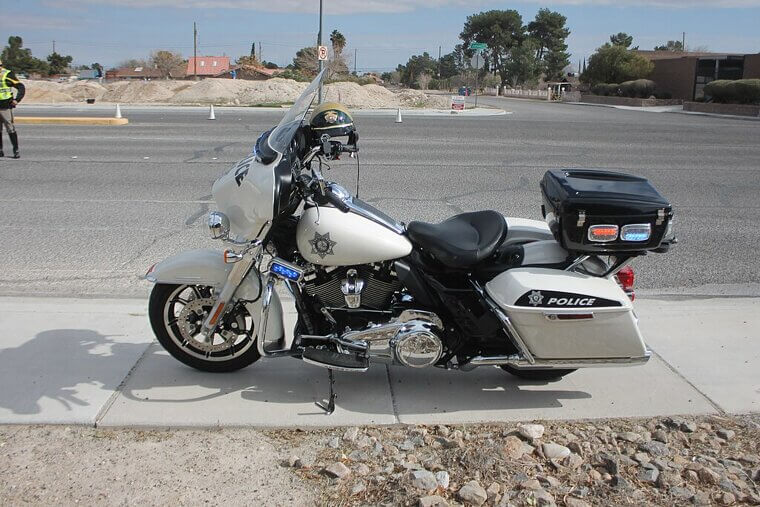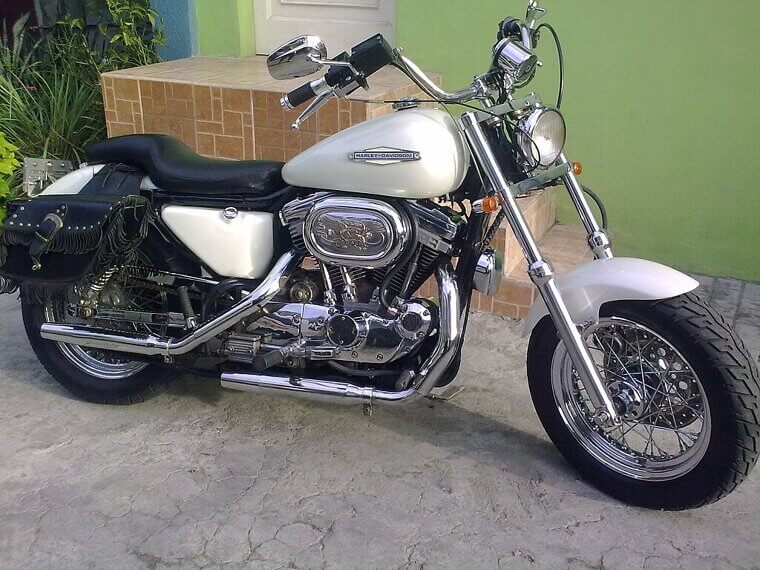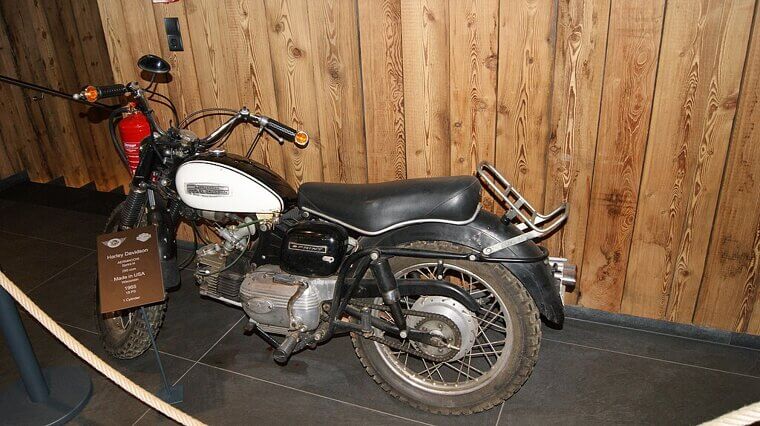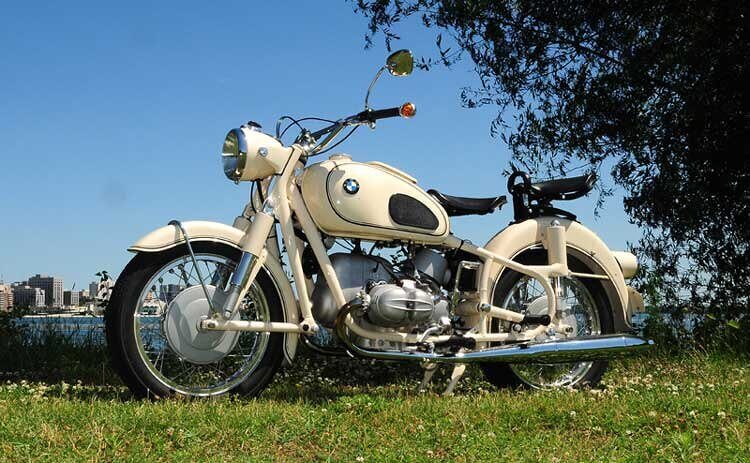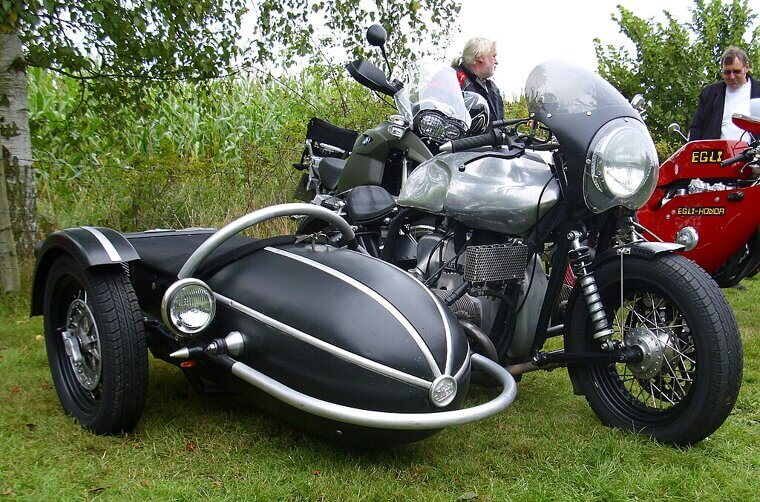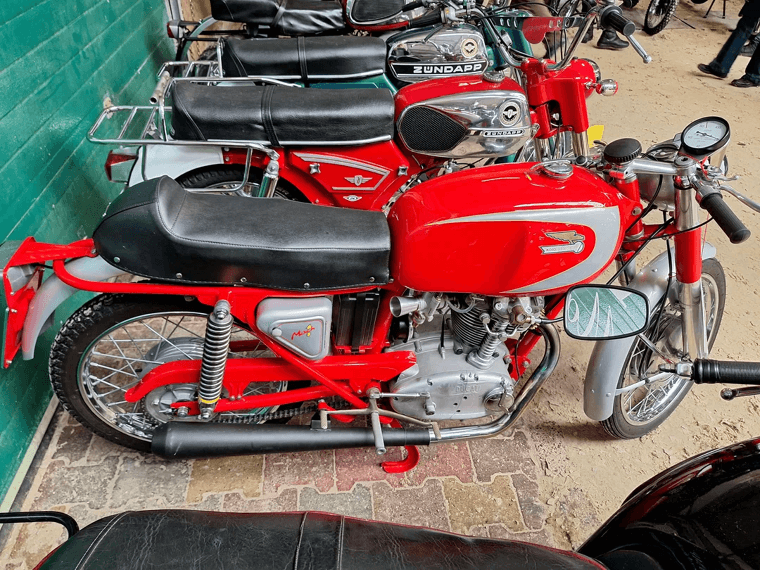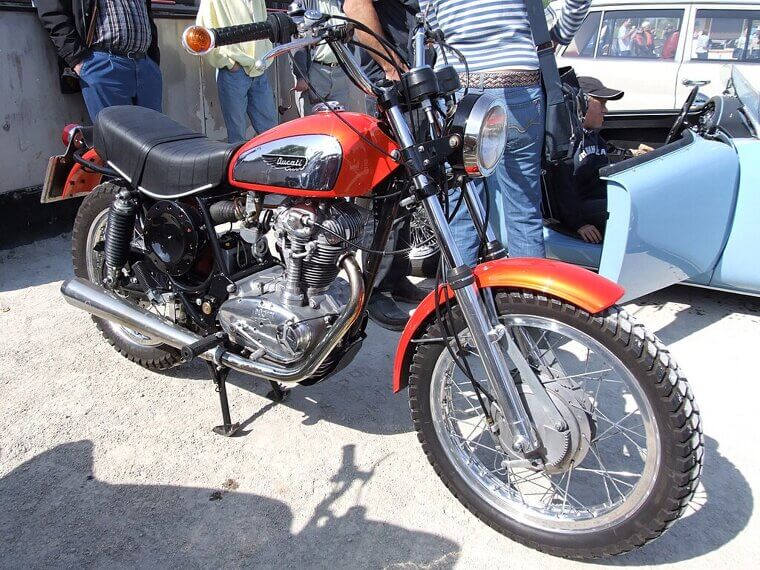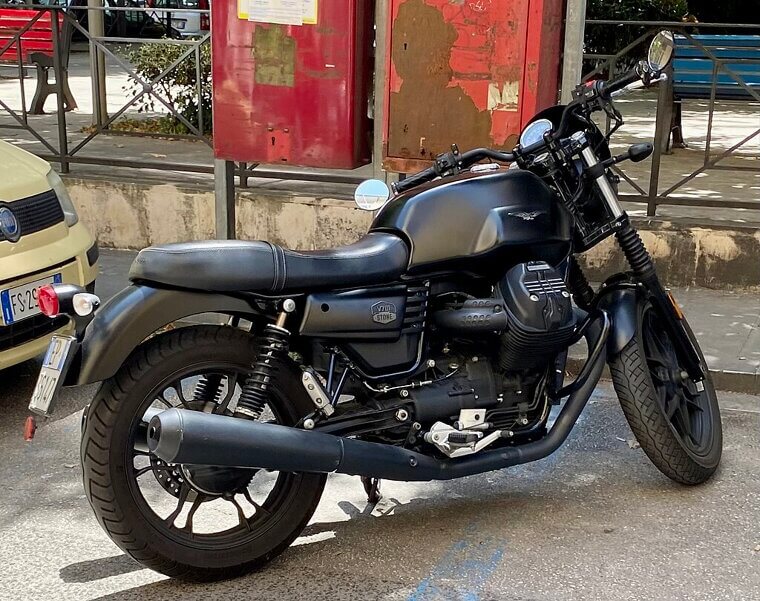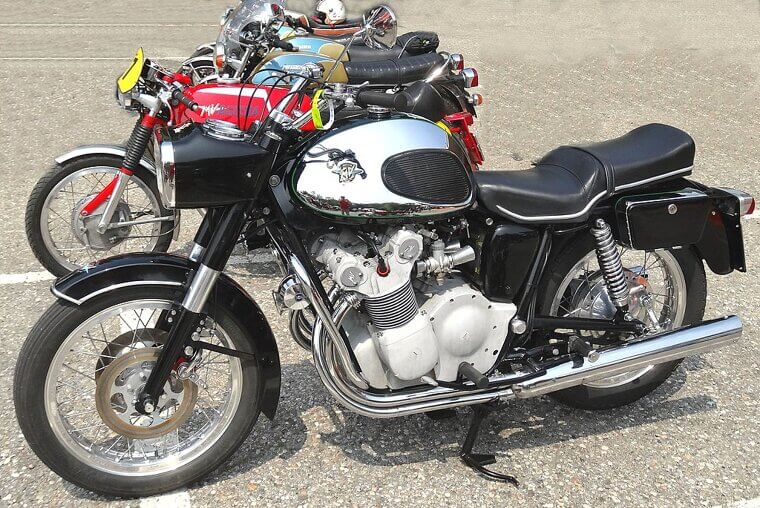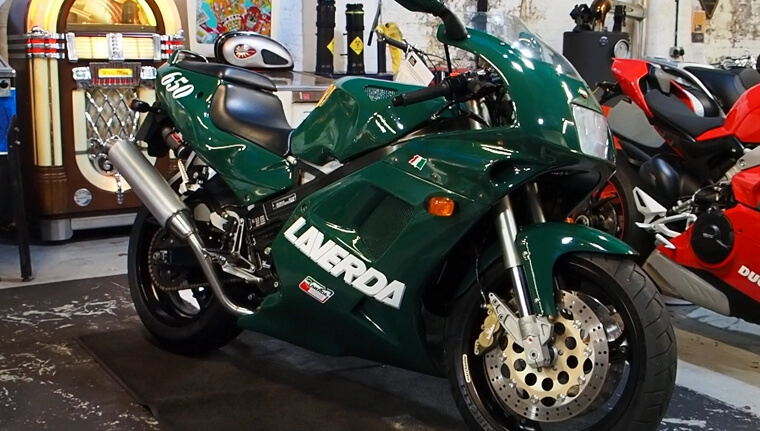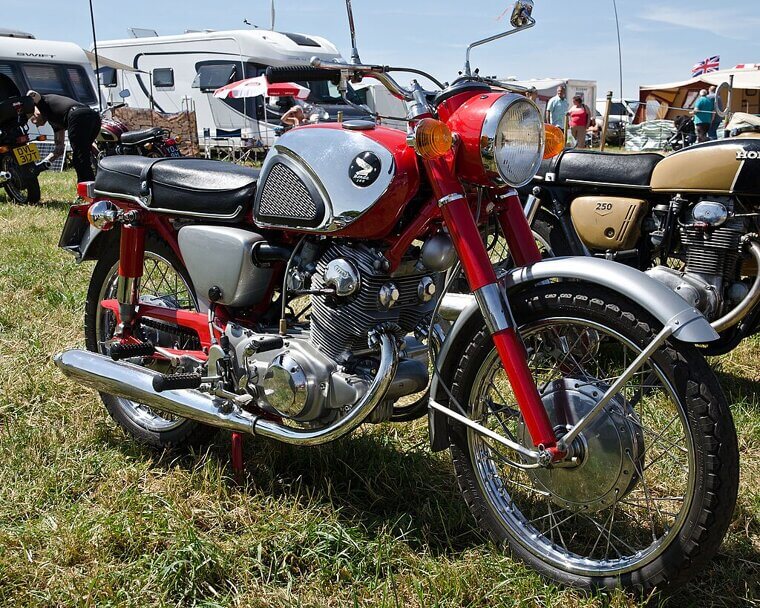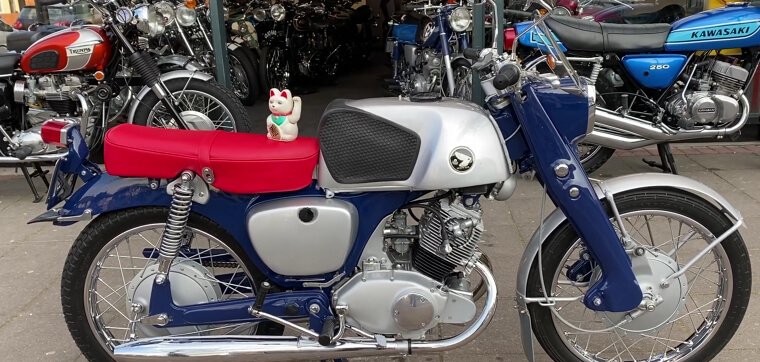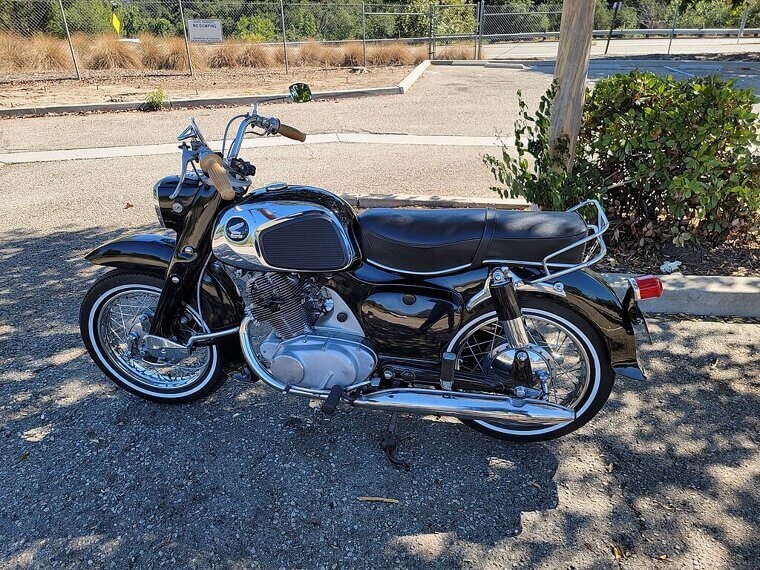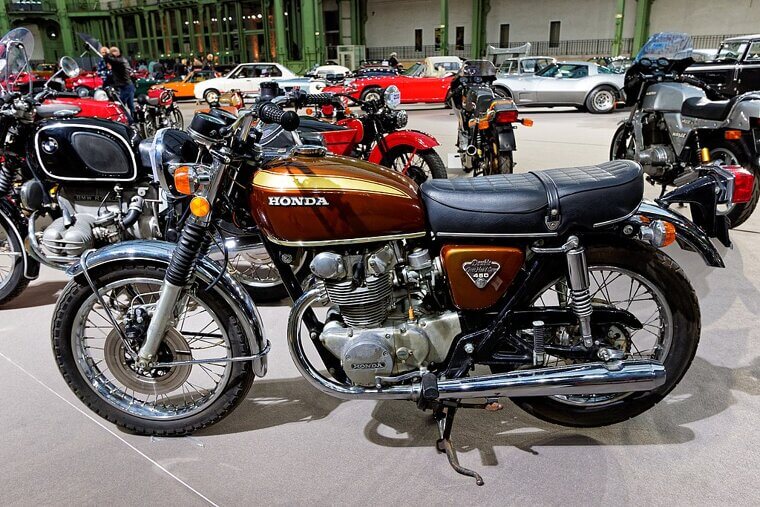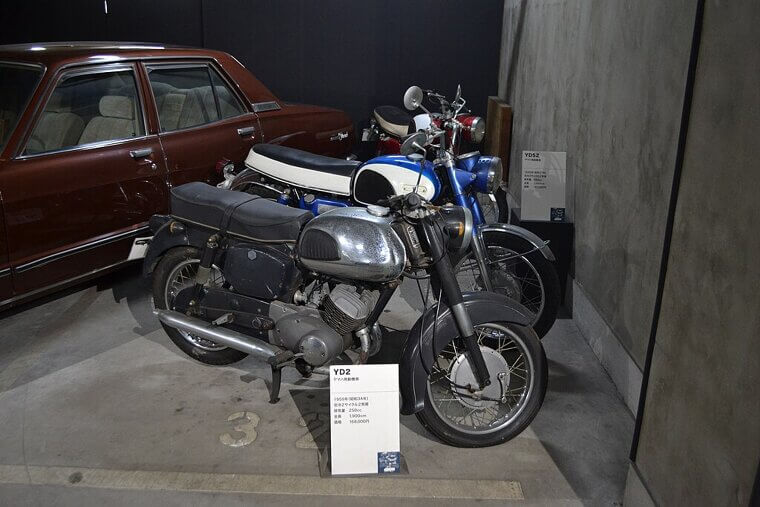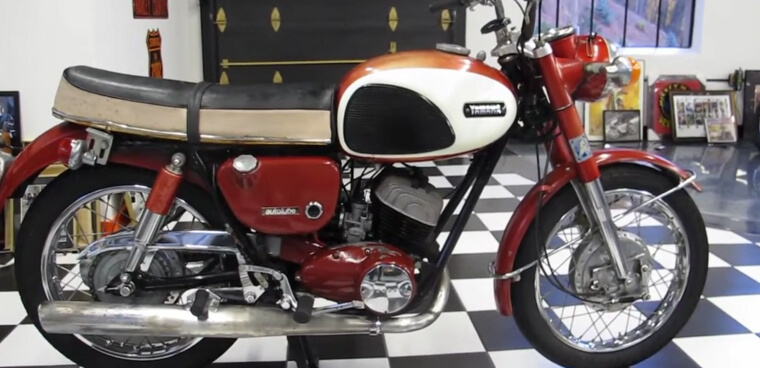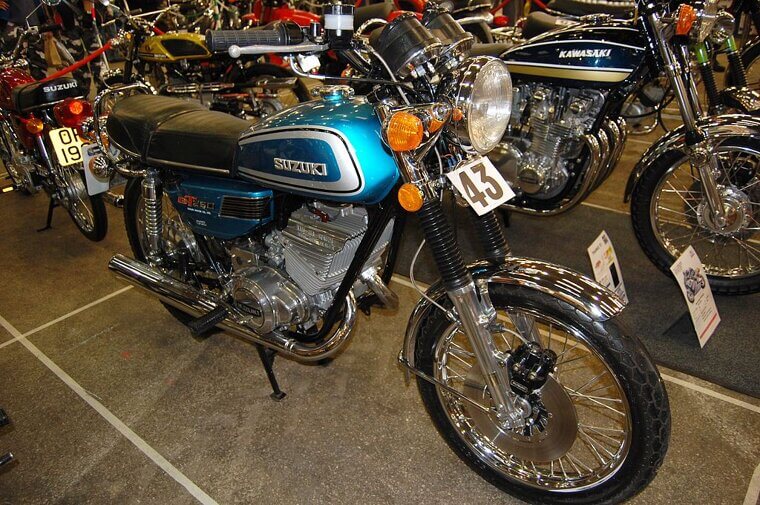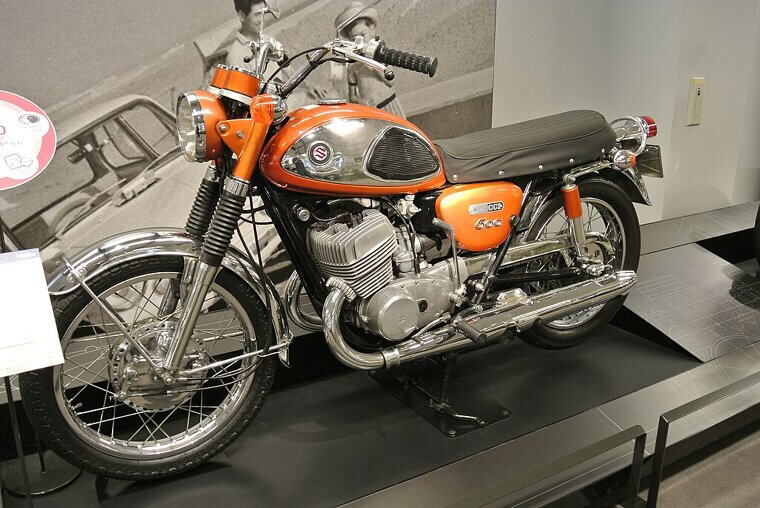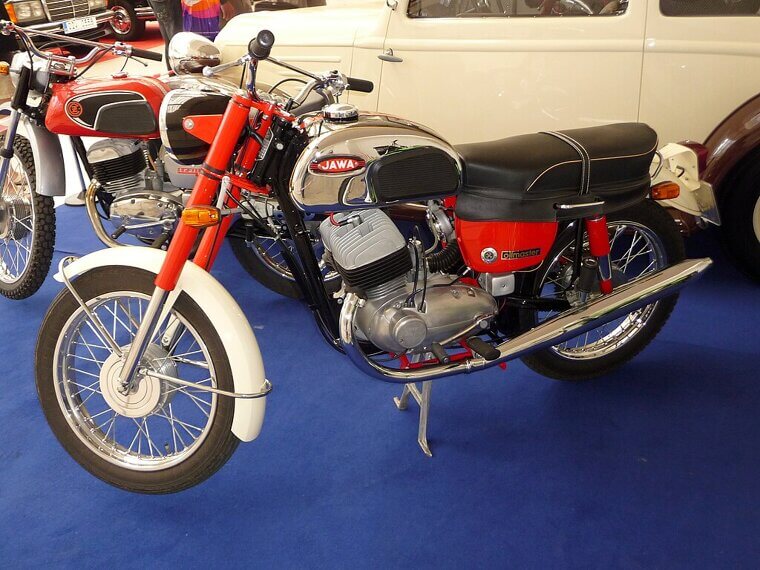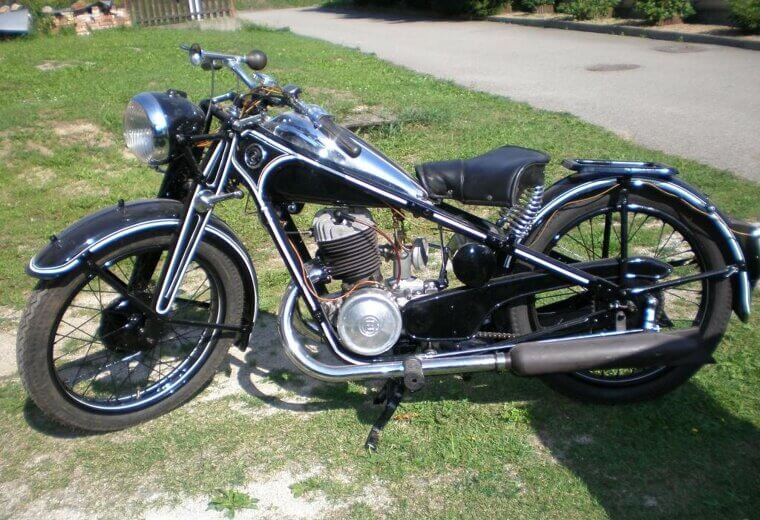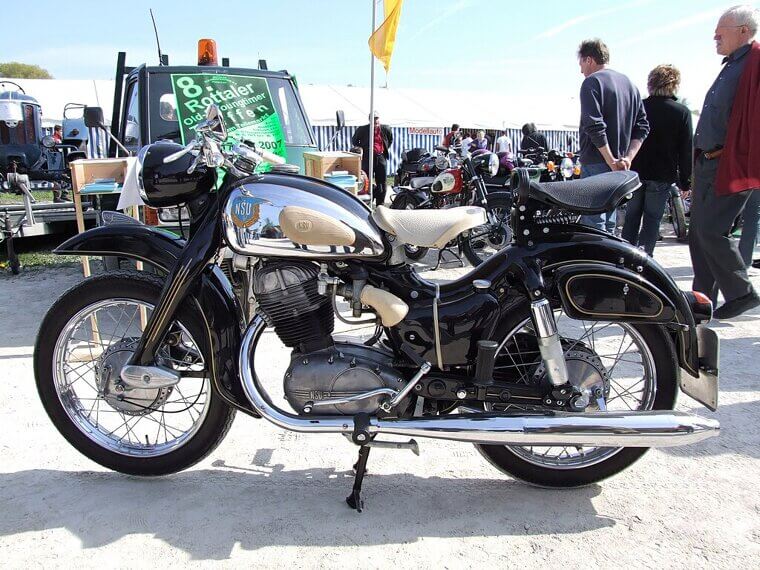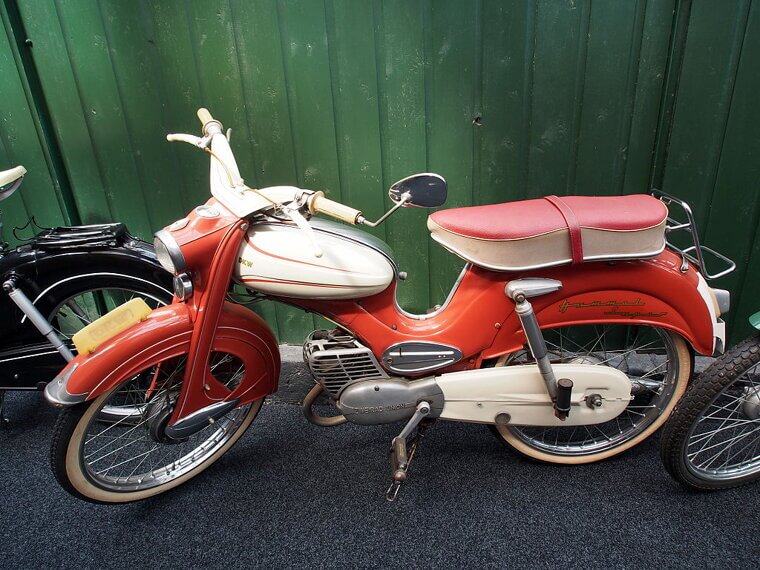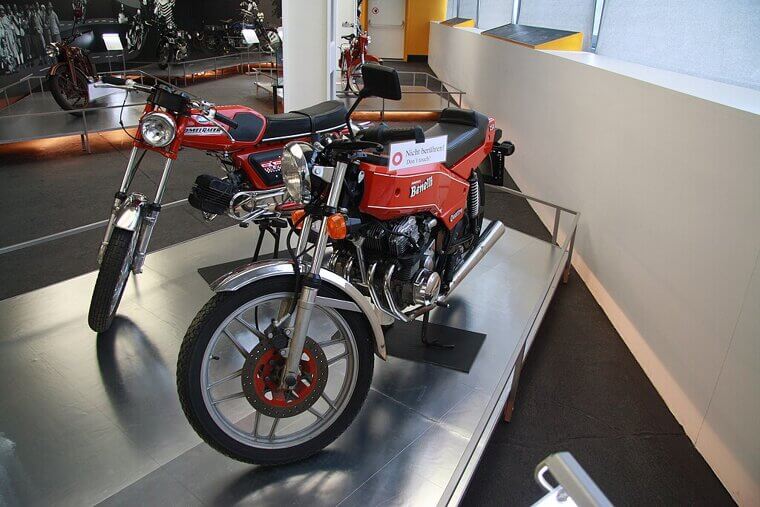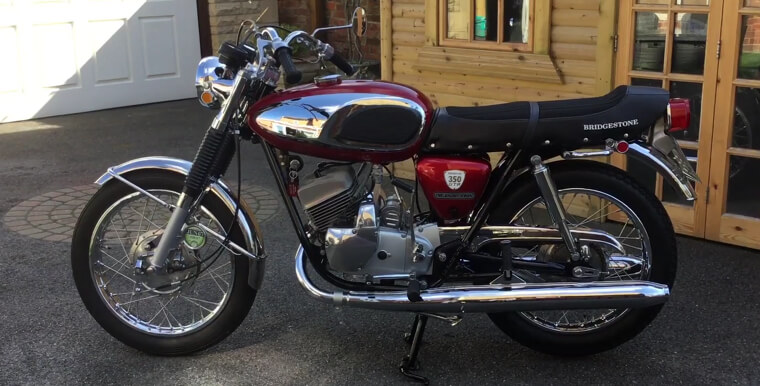Triumph Bonneville T120
The Bonneville didn’t just roll into the ’60s - it owned them. Every rocker worth his leather had one, and every dreamer wanted one. Fast, loud, and effortlessly cool, it was the motorcycle James Dean would’ve ridden if fate hadn’t called early. With 650ccs of charisma, the Bonnie set trends.
SG2012
Before adventure bikes were a thing, there was the TR6 Trophy; born for the desert, built for legends. Steve McQueen rode one, and that alone sealed its immortality. Equal parts muscle and manners, it could roar across dunes or glide through the city like a movie star late for his own premiere.
BSA Lightning
The BSA Lightning was Britain’s thunderclap - a twin-cylinder beauty that howled with intent. Built for American highways and café corners alike, it balanced brute force with a hint of sophistication. Riders didn’t just twist the throttle; they summoned storms. And when it hit top gear, the world blurred.
BSA Spitfire
The Spitfire wore its name like a promise… and kept it! Brutally fast and borderline untamed, this was BSA’s answer to the need for speed with swagger. It looked like trouble and sounded like freedom, roaring through the ’60s with a defiant grin. Polished metal, hot temper, and zero apologies.
Norton Atlas
The Atlas was the wild heart of the Norton lineup: big, bold, and ready to shake your bones loose. Its vibration was legendary, but so was its power. It handled like a boxer in a tuxedo; graceful, dangerous, and ready for anything. This kitty didn’t purr - it growled.
Norton Commando
The Commando didn’t just evolve the café racer, it perfected it. With its isolastic frame taming the infamous Norton shake, it was smooth, fierce, and devastatingly good-looking. It was the rock star of the road: leather boots and just enough engineering genius to make rebellion feel refined.
Velocette Thruxton Venom
The Thruxton Venom was like a British secret weapon - lean, lethal and gloriously temperamental. Hand-built precision and 100 mph capability gave it legendary status, while every turn felt like a duel between control and chaos. With its deadly bite, the venom always won by a hair.
Royal Enfield Interceptor
Before the world went mad for Japanese imports, the Interceptor stood tall as Britain’s last great heavyweight. All chrome, swagger, and smooth twin-cylinder thunder, it wasn’t delicate; it was dashing, the kind of machine you parked outside a diner just to watch reflections of awe.
Matchless G15
The Matchless G15 was the rock-and-roll hybrid nobody saw coming, a marriage of Norton’s frame and Matchless’ heart. It was loud, proud, and prone to mischief, a bike that begged to be ridden too fast on roads too narrow. It was refined rebellion at its British best.
AJS Model 31
If the ’50s were about reliability, the Model 31 was about refinement with rebellion. It had poise, polish, and a gentle growl that hinted at trouble beneath the manners. Built for touring but ready to brawl, it was a gentleman’s motorcycle in a world going delightfully rogue.
Harley-Davidson Electra Glide
The Electra Glide was America stretching its legs and discovering luxury on two wheels. Electric start, full fairing, and chrome for miles, it was the Cadillac of cruisers. Riders didn’t rush; they sailed, with wind in their hair and a thousand miles of road humming beneath that bar-and-shield badge.
Harley-Davidson Sportster XLH
The Sportster was pure attitude on wheels: compact, muscular, and perfectly unrefined. It was the bad boy of the Harley lineup, the favorite of outlaws and dreamers alike. Twist the throttle and it didn’t just accelerate; it announced itself, a symphony of steel and American rebellion.
Harley-Davidson Sprint H
Half Italian, half American, the Sprint H was Harley’s quirky little experiment… and it worked. Agile, punchy, and surprisingly charming, it proved Harley could dance as well as thunder. It was the café racer in a cowboy hat, sipping espresso with one hand.
BMW R69S
The R69S was Germany’s silent revolution, a boxer twin so smooth it felt like riding a heartbeat. No drama, no chaos, just engineering elegance. It didn’t rebel - it refused to hurry, which was its own form of rebellion in a world obsessed with noise. Quietly brilliant, and effortlessly timeless.
BMW R75/5
By the end of the decade, BMW dropped the R75/5, a machine that whispered the future. Lush suspension, electric start, and the kind of comfort that made cross-country dreams come true. It was sophisticated rebellion, a road warrior wearing a philosopher’s face. It was the gentleman outlaw’s weapon of choice.
Ducati Mach 1 250
The Mach 1 was the bike that made Ducati what it is - fast, fiery, and impossibly pretty. It could crack 100 mph from a quarter-liter engine, which was pure witchcraft in the ’60s. Sleek, racy, and painted in that sinful shade of red, it was passion on two wheels.
Ducati Scrambler 350
The Scrambler was Italy’s answer to the wild, dusty freedom of America’s West. Light, playful, and rugged, it blurred the line between road and dirt long before “dual sport” was a thing. It didn’t care where the road went—it cared how good it felt getting there. Youth, bottled in gasoline.
Moto Guzzi V7
The Moto Guzzi V7 was Italy’s declaration of modernity, a shaft-driven V-twin masterpiece that mixed reliability with romance. It wasn’t a rebel; it was a revolution in a suit. The V7 cruised effortlessly, murmuring in that distinctive Guzzi rumble - like opera through exhaust pipes.
MV Agusta 600
The MV Agusta 600 was a high-speed sculpture, a touring machine built with racer DNA. With its inline-four engine, it whispered of the future while looking like a rolling art gallery piece. It was fast, refined, and far too beautiful to be practical. It was indulgence in motion.
Laverda 650
Before Laverda became synonymous with superbikes, it gave us the 650, a bike with the heart of an Italian stallion and the manners of a Swiss watch. Smooth, strong, and eager, it put the world on notice that another contender had arrived.
Honda CB77 Super Hawk
The Super Hawk was Honda’s mic-drop moment. A 305cc twin that could run rings around bigger bikes, it introduced the world to Japanese precision and reliability. It revved like a banshee, looked like a movie prop, and rode like a dream. The age of “Made in Japan” had officially begun.
Honda CB92 Benly Super Sport
The Benly was tiny but fearless. Featherweight, rev-happy, and perfectly balanced, it became the darling of the lightweight racing scene. It didn’t roar - it sang, a high-pitched symphony of mechanical grace. It’s proof that fun isn’t measured in cubic centimeters; it’s measured in smiles per mile.
Honda Dream 305 (CA77)
The Dream looked like it came straight from a sci-fi comic - curved bodywork, enclosed chaincase, and a name that told you exactly what to expect. Smooth, dependable, and oddly elegant, it was the bike that turned nervous newcomers into lifelong riders. Honda didn’t just sell motorcycles, it sold freedom.
Honda CB450 “Black Bomber”
The Black Bomber was Honda’s middle finger to the old guard - a 450cc twin that outclassed bigger British bikes and looked menacing doing it. Double overhead cams, snarling performance, and jet-black styling, it wasn’t just fast; it was a declaration. Japan had arrived, and it wasn’t asking permission.
Yamaha YDS2
The YDS2 was the two-stroke thunderbolt that gave Yamaha its wings. Lightweight and razor-sharp, it could outpace anything twice its size. Its howl was unforgettable, like a chainsaw singing the blues. For a generation of young riders, this was the machine that turned curiosity into obsession.
Yamaha YDS3 Catalina
The YDS3 was a sunburned speedster built for both road and sand, named after the Catalina Grand Prix and tuned for chaos. Twin carbs, twin pipes, and a hunger for high revs, it was small but savage. This was the sound of the ’60s: blue smoke, big grins, and endless weekends.
Suzuki T20 “Super Six”
The T20 was Suzuki’s cheeky revolution - six gears, twin cylinders, and a willingness to humiliate bikes with double the displacement. It didn’t ask for respect; it took it, one screaming upshift at a time.
Suzuki T500 Titan
Big, brash, and unashamedly two-stroke, the Titan was Suzuki flexing its muscle. It could outrun almost anything, yet it was smooth and steady enough for the open highway. This wasn’t refinement - it was rebellion disguised as reliability.
Jawa 350 Californian
A Czech classic in a Hollywood jacket, the 350 Californian was all attitude and no apologies. Exported with chrome flares and bright paint to woo American riders, it was equal parts charm and cheek. It might not have been the fastest, but it had style and soul.
CZ 250 Sport
The CZ 250 Sport was the underdog racer that kept surprising everyone. Rugged, reliable, and deceptively quick, it conquered dirt tracks across Europe. It didn’t care about prestige; it cared about winning. It was a scrappy little fighter that proved skill and spirit could outshine horsepower any day.
NSU Supermax
The Supermax was Germany’s last great single before the age of twins and triples. Its clever engineering and sophisticated suspension made it a joy to ride - smooth as silk and quietly proud. It wasn’t about flash or fame; it was about craftsmanship.
DKW Hummel
Tiny, quirky, and utterly adorable, the DKW Hummel (German for “bumblebee”) buzzed through postwar streets with improbable charm. It was part scooter, part moped, and pure optimism. Not fast, not fierce, but unforgettable. Proof that sometimes joy comes from power, not personality.
Benelli 250 Quattro
The Benelli 250 Quattro was pure Italian excess, a miniature four-cylinder masterpiece that revved to the heavens and looked like a jewel. It didn’t just push boundaries - it laughed at them! Imagine an espresso machine with a racing license and you’re halfway there.
Bridgestone 350 GTO
Before it made tires, Bridgestone built rockets. The 350 GTO was a two-stroke beast that shocked everyone who dared to doubt it. Silky smooth and savagely fast, it proved Japan could do performance with finesse. It was short-lived, but unforgettable - a flash of brilliance that left black rubber poetry on every road it touched.

